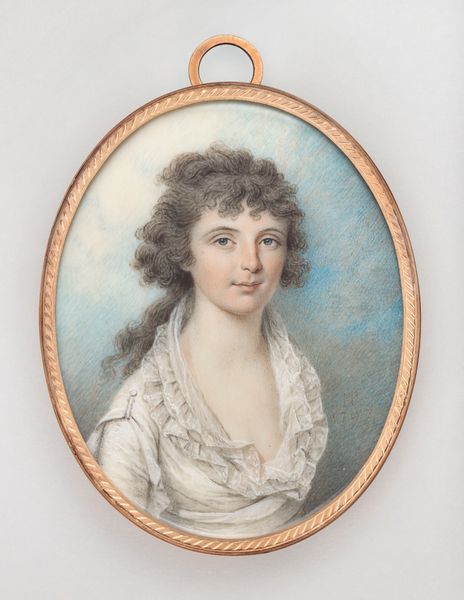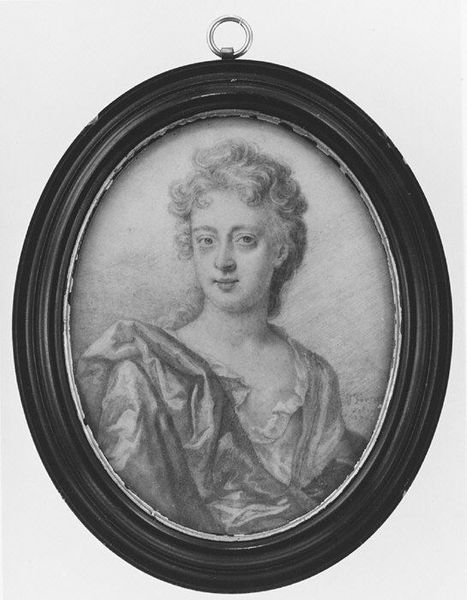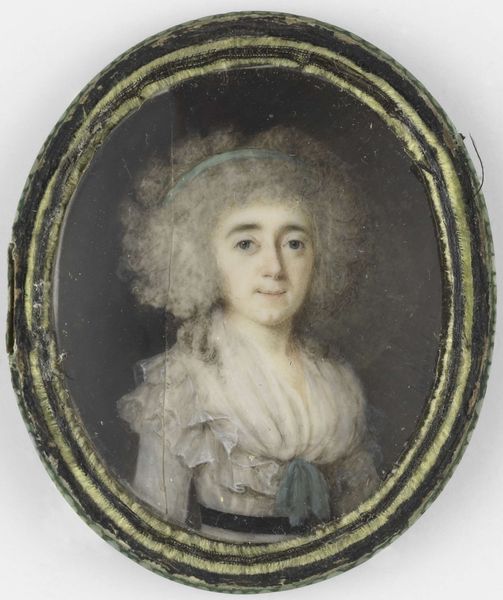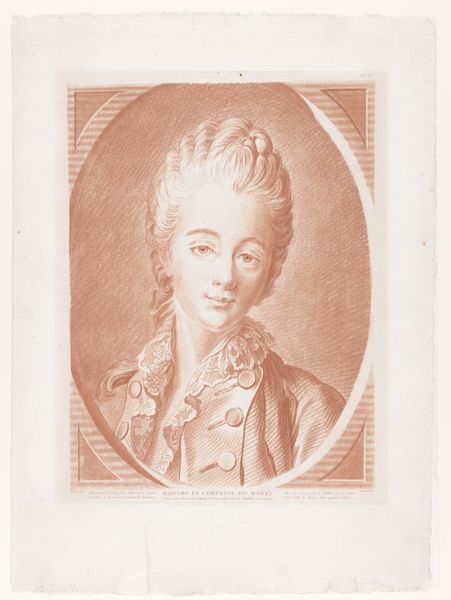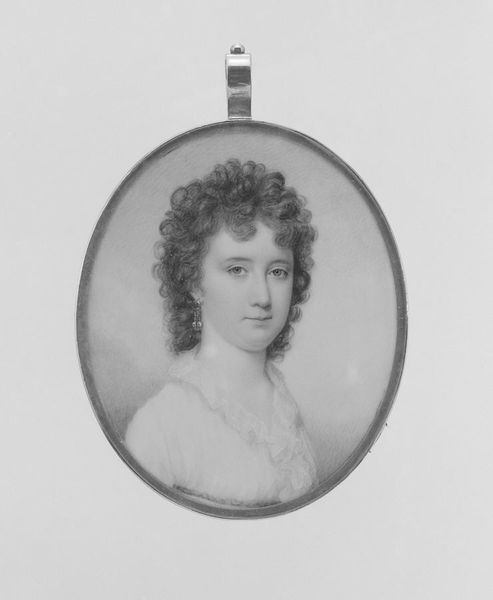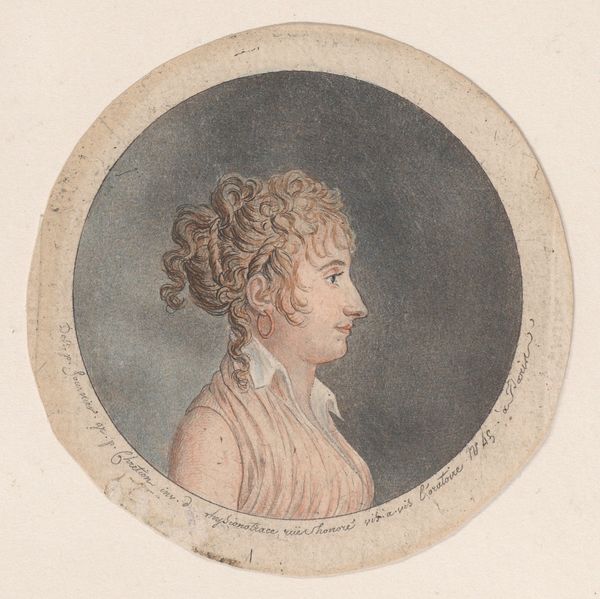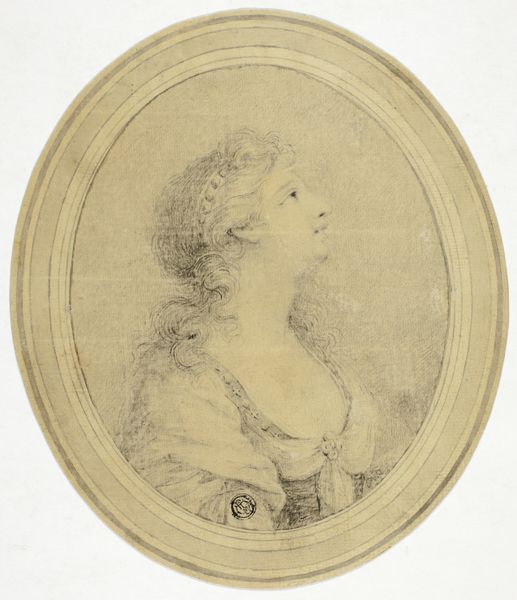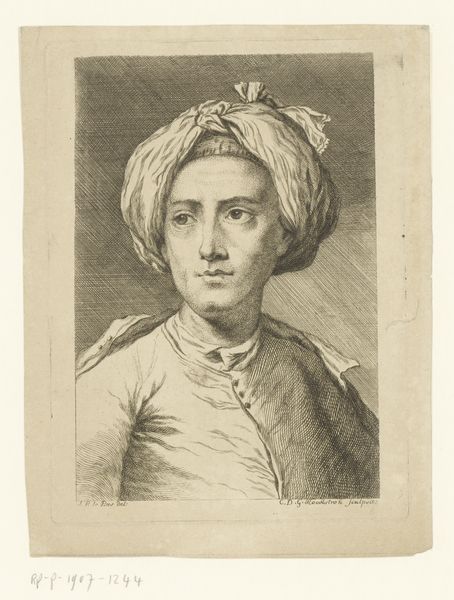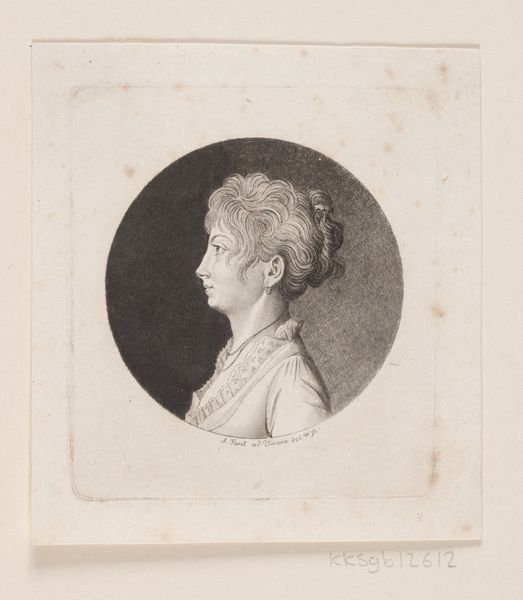
drawing, charcoal
#
portrait
#
drawing
#
baroque
#
charcoal drawing
#
figuration
#
line
#
charcoal
Dimensions: Oval, 4 3/8 x 3 1/2 in. (112 x 90 mm)
Copyright: Public Domain
Curator: Here we have "Portrait of a Woman," a charcoal drawing crafted around 1700. It’s part of the Metropolitan Museum's collection, a delicate echo from the Baroque era. Editor: My initial reaction is…quiet. It feels very intimate, even though it's in a museum setting. There's a melancholy in her gaze. Curator: The artist, Thomas Forster, uses the oval frame to draw us into the subject's space. Portraiture like this in the Baroque period was tied to status and social identity. Editor: Absolutely, portraits often became these codified markers of rank, but Forster complicates that a bit for me. I'm drawn to how the texture of the charcoal almost softens her features. It prevents the portrait from being too imposing or stiff. Does it reveal anything specific about gender roles at the time? Curator: Potentially. While men's portraits focused on power and authority, portraits of women often leaned into capturing beauty and virtue. See the soft lines, the way her hair delicately frames her face? The rose at her bosom – symbolic of love, secrecy, or perhaps the Virgin Mary. Forster is making her a carrier of cultural symbols that resonate with femininity, but at the same time the portrait is not overly sentimental, maybe even challenging how we view women. Editor: Right, she's a subject to be viewed, yes, but Forster’s deft use of the medium makes her feel remarkably present. And this is achieved solely using line and shade. I mean, this woman seems incredibly complex. It challenges this idea of idealized womanhood, where all those ideals—beauty and virtue—often flattened women to being perceived just one-dimensionally. It's very thought-provoking for sure. Curator: Absolutely. And the very choice of charcoal signals accessibility, it is economical yet rich. Perhaps a choice reflecting on a patron who had less social rank, or perhaps Forster chose this medium to signal his prowess through limitation? What stories do we then want to read from it? Editor: That gives us so much to contemplate. Thank you. It's been lovely delving into her world and unpicking her history with you.
Comments
No comments
Be the first to comment and join the conversation on the ultimate creative platform.
